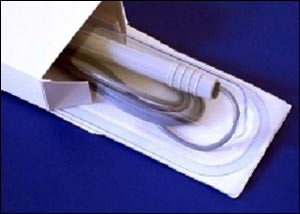Medical Device Packaging Standard
Packaging industry leaders and pharmaceutical product marketers now have to
overcome many hurdles caused by a high level of regulations imposed on the
industry. Changes in packaging materials, medical packaging specifications
or simply nomenclature are synonyms for increased cost and staff
allocations, which add to the overall price of the drug and do not bring
much value to consumers or pharmaceutical marketers.
The regulated
environment is necessary to assure consumers that the drugs they use are
safe and exhibit all the properties claimed by the manufacturers. The impact
of these internal costs on the pharmaceutical industry often freezes the
implementation of new packages at the gate. It is only with the introduction
of a new over-the-counter (OTC) or prescription drug that packaging
marketers and developers have an opportunity to incorporate new technologies
in materials and function.
Too often, the pharmaceutical industry turns to the standard packaging
method of bottles and threaded caps, without exploring the best way a drug
could be packaged from the user's point of view. On the other hand, the food
and personal care industries spend a lot of time, energy and money
developing packages that respond better to the consumer's preference:
mayonnaise is now available in an upside-down bottle with a dispensing cap;
most body washes, because of their texture, are also packaged in upside down
dispensing systems; and many snacks are prepackaged in small pouches for
children's lunches. These are only a few examples.
As the economy continues evolving towards complete globalization, we will
see drugs filled and packaged in Europe, for example, launched in the US.
The way Europeans package analgesic is quite different to the US. Blisters
are used in 80% of packaging in the European pharmaceutical market but in
only 20% of the packages in America. Blisters do not offer the SF/CR
compliance required in North America; new packaging methods will have to be
developed. Europeans have not yet developed any rules or specifications that
marketers have to comply with, but discussions have been on-going between
the industry and regulatory bodies all over Europe and even Asia. This
dialog will create the need for ideas and innovations from packaging
professionals worldwide.

It is not automatic that European standards will match those in North
America; it would be quite surprising if European drug marketers favor North
American packaging methods. Europe has always been many micro-markets very
close geographically; now it is one big marketplace but retains many
geographical and, more importantly, cultural differences. These
micro-markets are serviced by many creative packaging companies that are
still very active and alive today, all looking at the opportunities the EU
has created. North America's mass-market, standardized, low-cost approach
might not be the way the rest of the world sees as the best to market
products, and their choice of packaging might be quite different to comply
with CPSC regulations. Vocabulary.


 It is not automatic that European standards will match those in North
America; it would be quite surprising if European drug marketers favor North
American packaging methods. Europe has always been many micro-markets very
close geographically; now it is one big marketplace but retains many
geographical and, more importantly, cultural differences. These
micro-markets are serviced by many creative packaging companies that are
still very active and alive today, all looking at the opportunities the EU
has created. North America's mass-market, standardized, low-cost approach
might not be the way the rest of the world sees as the best to market
products, and their choice of packaging might be quite different to comply
with CPSC regulations. Vocabulary.
It is not automatic that European standards will match those in North
America; it would be quite surprising if European drug marketers favor North
American packaging methods. Europe has always been many micro-markets very
close geographically; now it is one big marketplace but retains many
geographical and, more importantly, cultural differences. These
micro-markets are serviced by many creative packaging companies that are
still very active and alive today, all looking at the opportunities the EU
has created. North America's mass-market, standardized, low-cost approach
might not be the way the rest of the world sees as the best to market
products, and their choice of packaging might be quite different to comply
with CPSC regulations. Vocabulary.